Exclusive Private Tours
Exploring Zagora: the Tamagroute ceramic cooperative in Morocco
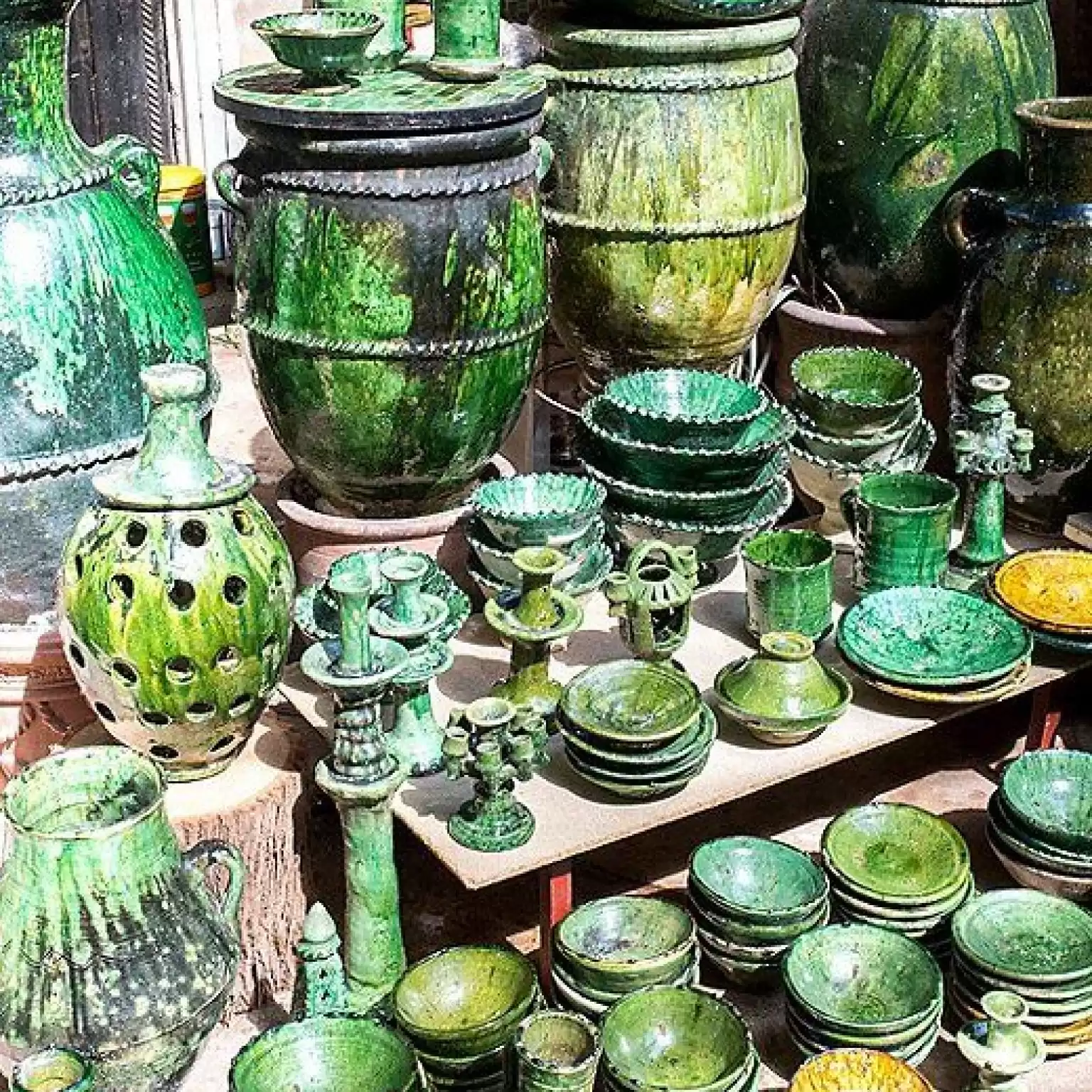
Every day, among the vibrant landscapes of Morocco, expert hands shape burnt orange clay, creating ceramic wonders under the North African sun. This centuries-old art is a daily ritual. In picturesque villages, women embark on a journey to the riverbanks, where they delicately extract wet clay from the earth, filling their woven baskets to the brim. They carry home a heavy load, and as they traverse the ground, the clay drips, leaving a subtle sign of their efforts. This is the essence of Morocco’s ceramic tradition.
Morocco is renowned for its wide range of ceramics, each piece testifying to both everyday utility and artistic expression. Many end up in the hands of tourists eager for a piece of Moroccan craftsmanship, while others travel far and wide to international markets. The vibrant souks are decorated with hand-painted ceramics, boasting intricate designs, vibrant hues and the meticulous touch of skilled artisans.
Discovering the treasures of Zagora ceramics
In the bustling city of Fes, ceramics take on a luxurious form, characterized by a kaleidoscope of colors and intricate double-glazing techniques. However, it is in Zagora, more precisely in the sacred village of Tamegroute, that the history of Moroccan ceramics unfolds in a unique way. Here, the pottery boasts a henna glaze and is sun-dried to perfection. When you venture to Zagora, you have the amazing opportunity to observe the art of pottery making up close. Local artisans open their workshops to eager students, allowing you to try shaping clay on a traditional wheel or even create your own pottery piece as a keepsake.
The clay used at Tamegroute comes from the nearby river banks, is carefully crafted by hand and fired in kilns ingeniously constructed into the rugged countryside slopes. The green glaze, resulting from the oxidation of copper, gives these ceramics their distinctive character. During the cooking process, the pieces are stacked together, resulting in small linear scars that make each piece unique and imperfect. Tamegroute is the only Moroccan village celebrated for its pottery adorned with stunning green and brown glaze.
The historical importance of Tamegroute dates back to the 11th century, when the Nasiriyya brotherhood introduced indigenous techniques and green enamel from Fes to Tamegroute. This convergence of knowledge and craftsmanship elevated the city’s stature as an artistic and commercial center.
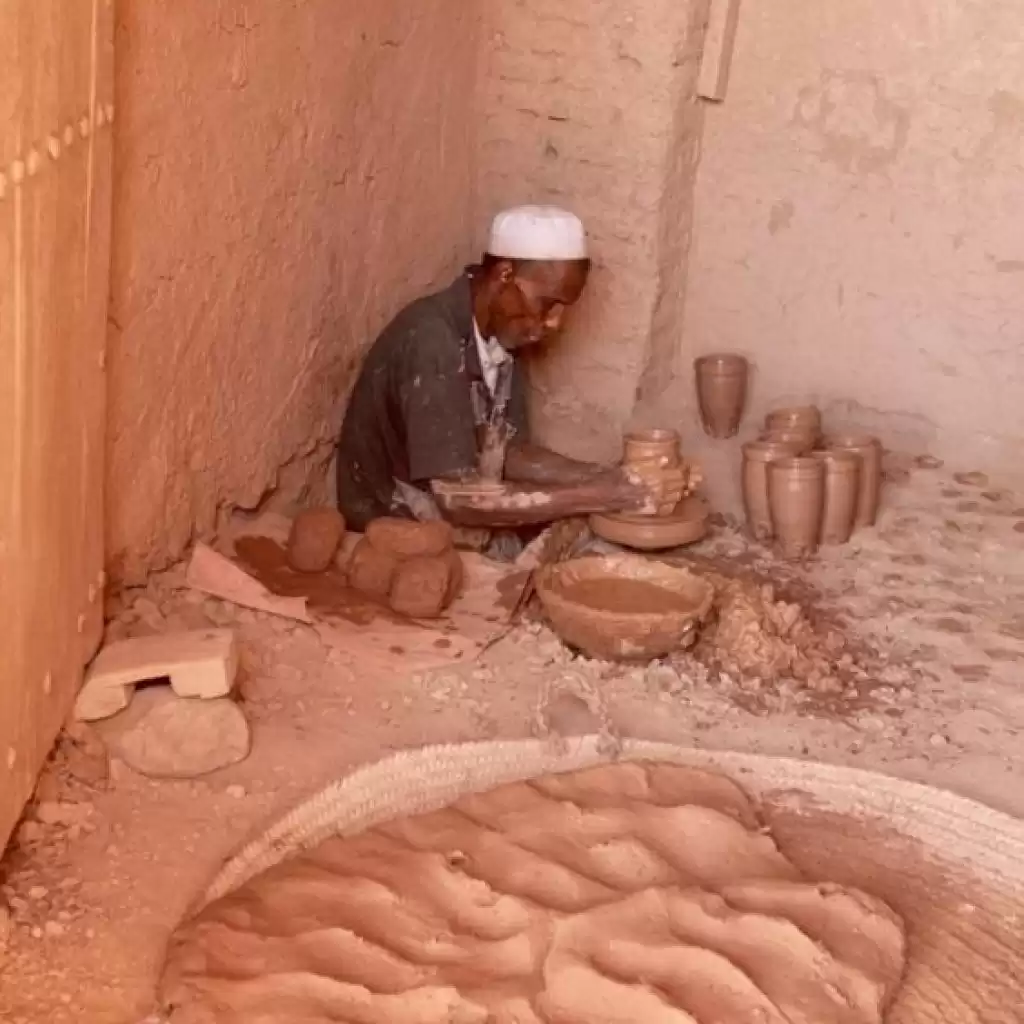
Exploring the Tamegroute pottery cooperative
The Tamagroute Ceramics Cooperative is among the main attractions for travelers exploring the Zagora region. Here ceramics are not just admired; it is made and sold on site, allowing visitors to witness the creative process firsthand. As a unique touch, you’ll notice that some of Tamegroute’s roofs are decorated with the same earthy green ceramic clay. When the sun’s rays grace this deserted city, these green roofs shine, adding a touch of enchantment to the landscape.
The iconic green glaze of Tamagroute ceramics is a fusion of magnesium and copper, which makes ceramic pots and plates not only aesthetically pleasing but also waterproof. A trip to these pottery villages offers a fascinating glimpse into Morocco’s rich culture, offering the chance to experience centuries-old craftsmanship and take home a sustainable, “green” souvenir, preserving the legacy of this art form without time.
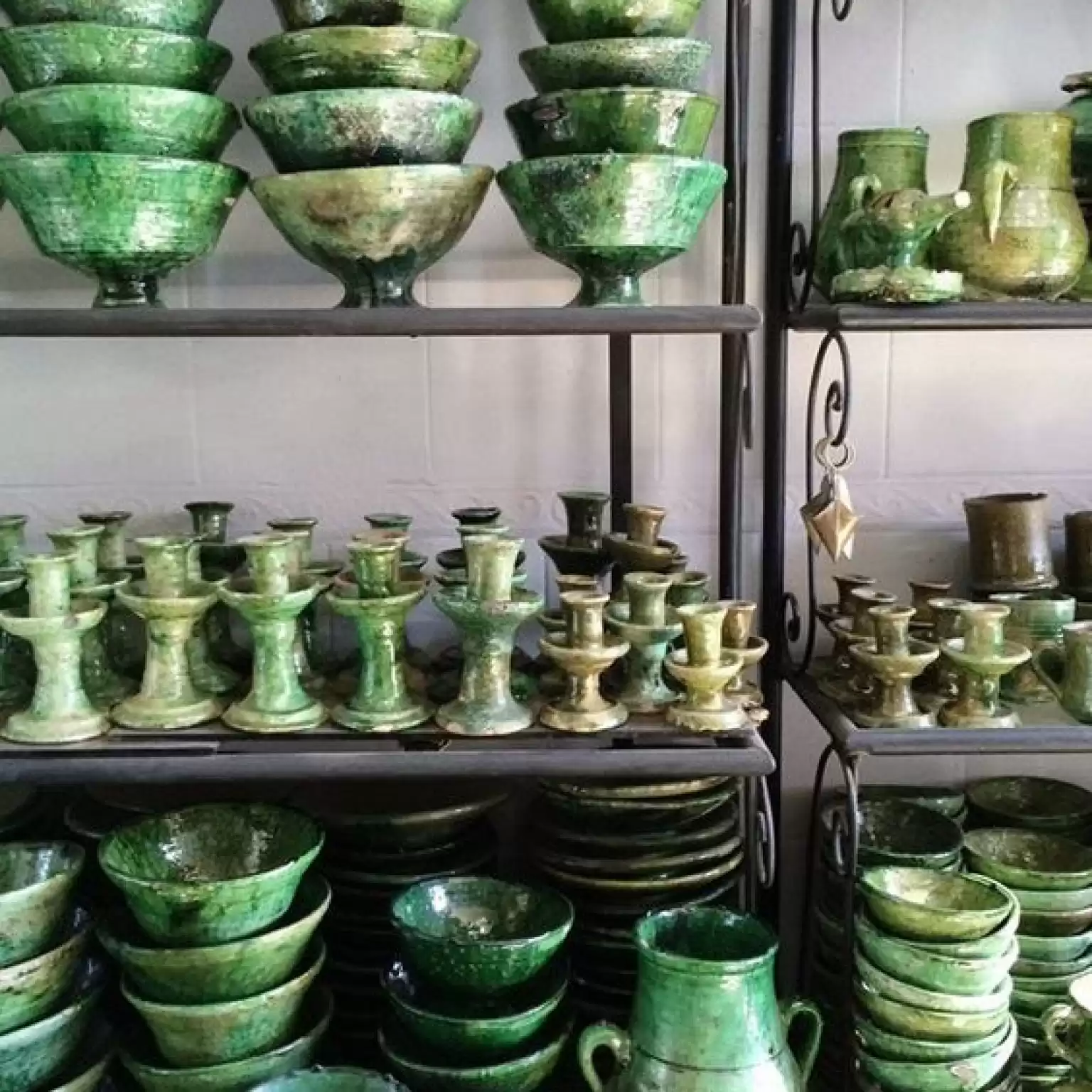
Recent posts in morocco desert travel tours blog
Your Guide to Finding the Perfect Hotel in Nkob
What is the best time to visit Morocco?
Morocco Camel Trekking in Merzouga
LUXURY BIVOUAC IN THE DESERT
Lorem ipsum dolor sit amet, consectetur adipiscing elit. Ut elit tellus, luctus nec ullamcorper mattis, pulvinar dapibus leo.

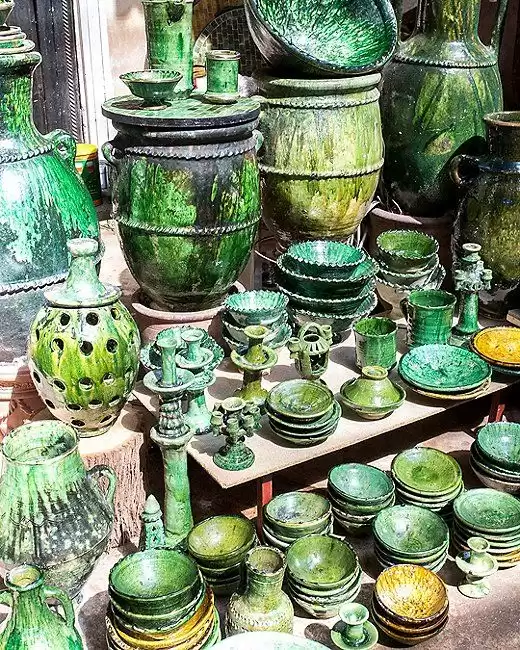
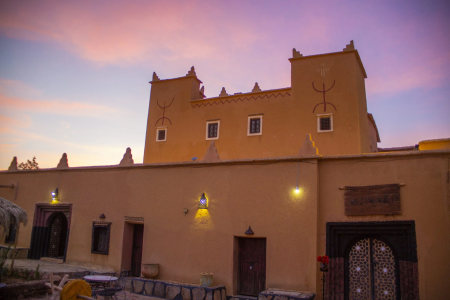

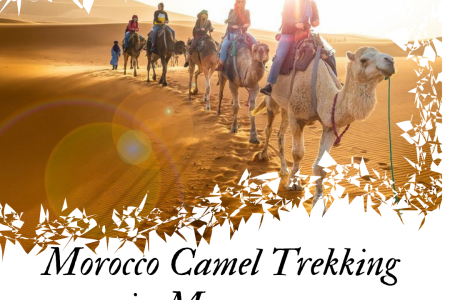
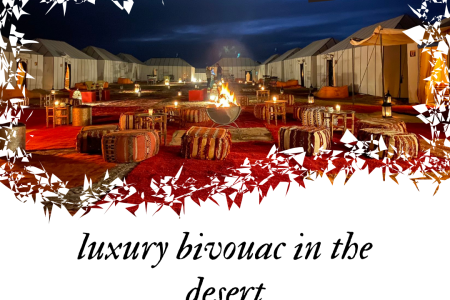
0 Comment